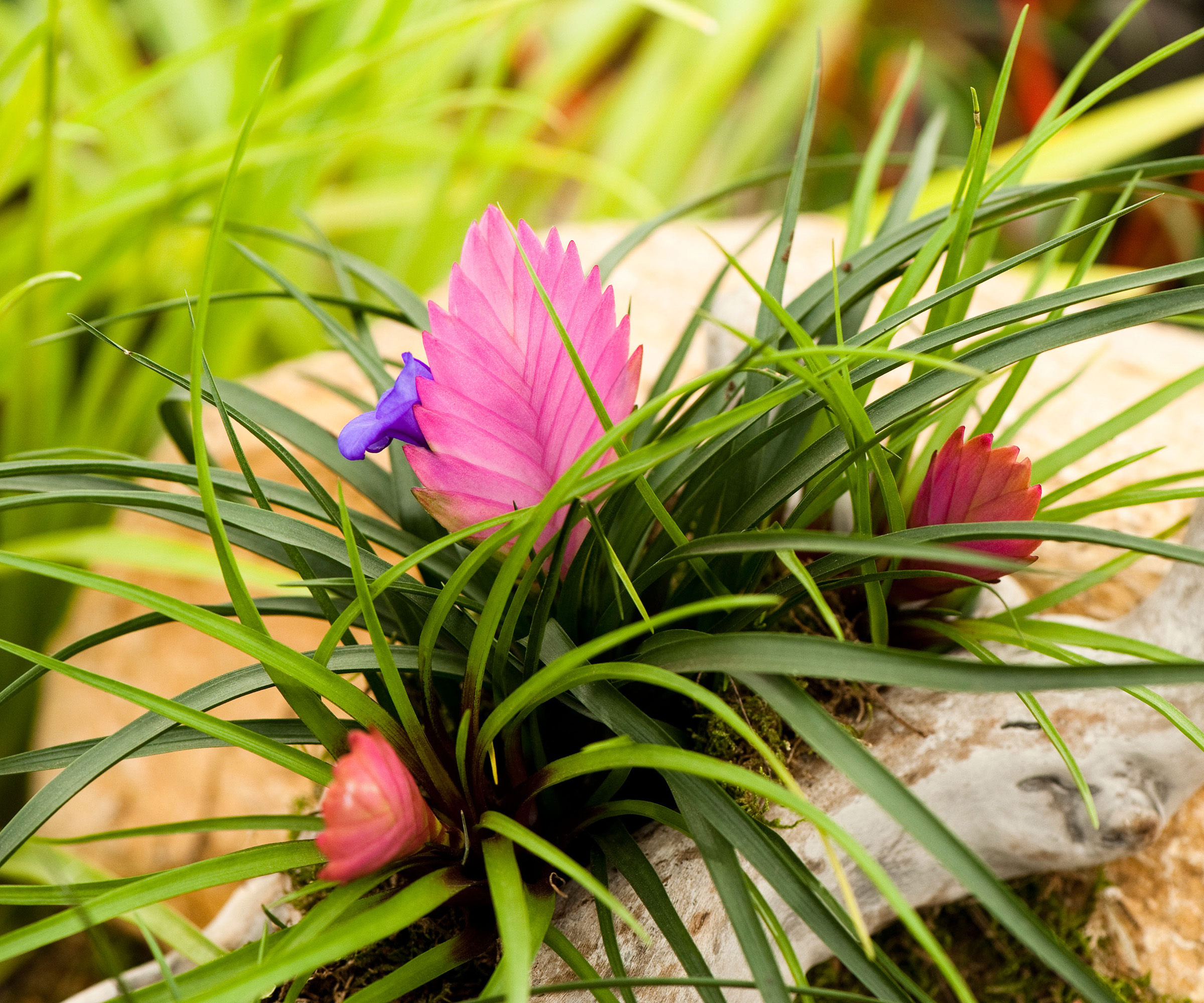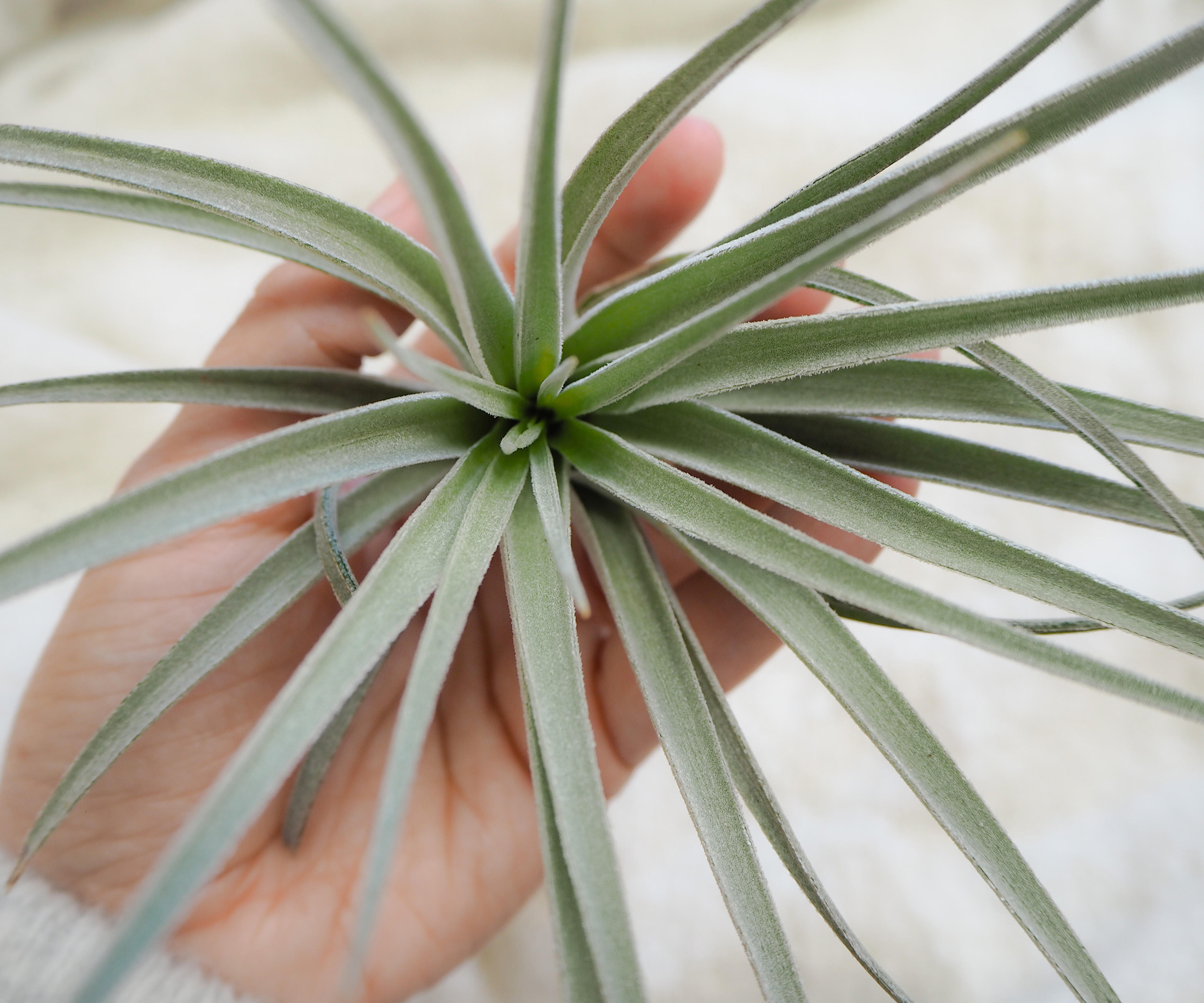Types of air plants – 8 varieties guaranteed to enhance your indoor garden
They're low-maintenance and don't even need soil to grow - we think air plants might just be the perfect house guest


You probably already know air plants are fantastic indoor plants. Doubtless their interest comes from the fact that they need no soil to thrive, as they draw water and nutrients through their leaves.
This allows you to display them in containers and settings that would be unsuitable for most other indoor plants, such as in glass jars, tucked into seashells or decorating pieces of driftwood.
Generally speaking there are two main types of air plants. There are those which originate from desert regions and those from rainforests. It's easy to tell the difference between the two.
All types of air plants will have what look like tiny hairs covering their leaves. These are known as trichomes which are what the plant uses to take up water. This means they are drought tolerant as water is taken from the air rather than the soil.
If your air plant has lots of tiny hairs and they are silver or fluffy in appearance then it is originally a desert species. Which, though similar in its needs to its rainforest cousin, can tolerate sunnier spots. Types of air plants which have a richer green foliage and fewer trichomes (tiny hairs) are the rainforest species and they will prefer shade.
There is a diverse selection to choose from, including those with bold tropical flowers and others where foliage is the selling point. Air plants are certainly low maintenance, but do have a few key requirements that will keep them happy and thriving in your home for longer.

Tillandsia stricta are popular blooming varieties
These are the best types of air plants to look out for
From exotic looking flowers to colorful foliage, there's so much that air plants can bring to your home, making them one of the best indoor plants you can get.
Design expertise in your inbox – from inspiring decorating ideas and beautiful celebrity homes to practical gardening advice and shopping round-ups.
Take a look at some of our favorite types of air plants, to find the right one for your houseplant display.
1. Tillandsia aeranthos

Ideal for beginners, this colorful air plant produces spidery green leaves and flowers reliably each year - its vivid pink or red bracts and deep purple petals putting on a dazzling show.
It is one the hardiest types of air plants and will be more than happy outside in the backyard from early summer in USDA zones 8-11. If you're having them inside the house then they make great bathroom plants.
Shop bundles of air plants
2. Tillandsia argentea

Like a spiky sea urchin, this tiny plant creates a fountain of pale silvery leaves. In fall, the foliage is joined by slim red flower heads with purple petals, which appear on long stems.
Easy to care for, it will make a beautiful ball of plants over time and is an ideal choice for beginners as part of your indoor garden as well as outdoors in warm regions. Mist rather than dunk this species to water it.
3. Tillandsia xerographica

Known as the king of the air plants, this silvery star bears a rosette of broad gray leaves which curl at the ends to create a striking display with the rest of your indoor garden plants.
The violet blooms, which appear on mature plants, are long-lasting and emerge from yellowish bracts on a long stem. A desert species, it likes a sunny spot and should be misted rather than submerged in water. In winter, keep it in cooler conditions: 50-60°F is ideal.
4. Tillandsia cyanea

Justifiably popular, this large species grows to about 12in or more and produces upright green leaves. The long-lasting flowerhead appears on a spike, and comprises a pink oval bract and dainty violet-blue blooms that provide months of color and interest.
‘I’ve kept air plants for several years, and love how striking they are for such little effort,' says Rachel Bull, Head of Gardens at Homes & Gardens. My personal favorite variety has to be my pink quill air plant, or Tillandsia cyanea, for its tropical, pink bracts.
'They are stunning and look fabulous styled against a green wall in my kitchen. I grow mine in a large, open fronted terrarium, on bark that has been specially formulated for use with bromeliad plants.’
One of the best low maintenance indoor plants it's easy to care for, needs no special attention and makes a stunning centerpiece for any air plant collection.

Rachel is a gardening writer, flower grower and floral designer. Her journalism career began on Country Living magazine, sparking a love of container gardening and wild planting. After more than a decade writing for and editing a range of consumer, business and special interest titles, Rachel became editor of floral art magazine The Flower Arranger.
5. Tillandsia bulbosa

Named after its bulb-like center, this unusual plant strikes a pose with its long glossy green leaves which turn red when the flower buds start to form.
The tubular blooms are pink and purple and appear on mature plants in spring. As an easy indoor plant, it needs no special treatment to perform well.
6. Tillandsia brachycaulos multiflora

This species creates a clump of slightly curving green leaves, which turn cherry red when the plant is about to flower. Especially if you keep it in bright, humid conditions.
The purple flowers produce a colorful display and you will often be rewarded with more than one bloom at a time.
7. Tillandsia albertiana

Loved for its large bright red flowers, which are short-lasting but can be produced in succession for over three months on established clumps.
This pretty indoor flowering plant, also sports contrasting grass-like pale green leaves. It is tolerant of very dry conditions and will prefer misting to being soaked in water.
8. Tillandsia tenuifolia

A very easy species, this air plant will decorate your home or your tropical garden, with its clumps of slim green foliage, and clusters of tubular pink flowers that terminate in vivid purple petals.
It soon forms a clump and tolerates neglect, reviving quickly after soaking in a tray of water.
FAQs
What is the lifespan of an air plant?
The life expectancy of different types of air plants varies, and while some air plants live for just one year, the most popular varieties generally survive for between three to five years, given good care.
One feature of these plants is that they die after flowering, having put all their energy into making their blooms. However, this is not the end for most plants, as they will produce babies, known as ‘pups’, around the edge of the mother, and these little ones will then grow on to replace those that have been lost.
What type of air plant is good for low light?
If your home receives little natural sunlight, opt for green-leaved varieties like Tillandsia bulbosa and Tillandsia cyanea. For sunnier spots, try a silvery Tillandsia xerographica, but keep all air plants, including the desert-dwelling species, away from south-facing windows, which may scorch them during the summer months. Also do not grow them close to radiators and heated floors.
Most of these air plant varieties are easy to care for as long as you remember to mist them regularly and keep them in the correct spot depending on their lighting requirements.

Zia Allaway is a garden book author, editor, and journalist, and writes for a range of gardening and women’s magazines, including Easy Gardens, Homes & Gardens and Livingetc, as well as The Guardian and The Daily Telegraph newspapers. She has also written books for the Royal Horticultural Society and Dorling Kindersley publishers, including Eco-Gardening, Compost, Low Maintenance, Practical House Plant Book, Practical Cactus & Succulent Book, Indoor Edible Garden, What Plant Where, and the Encyclopedia of Plants and Flowers.


